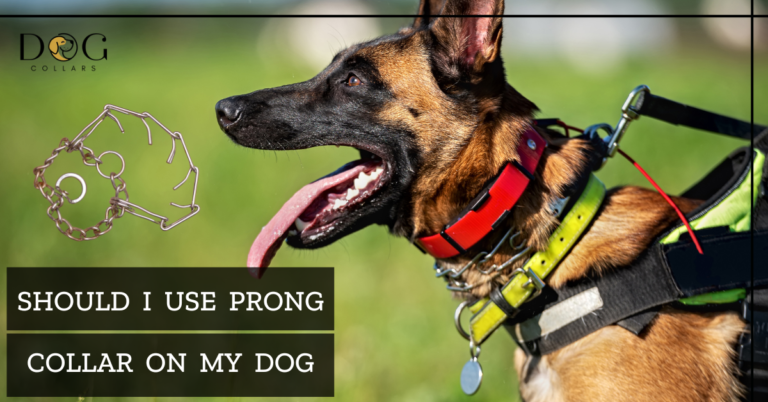How Do You Control A Rottweiler Dog – Simple Techniques

Controlling a Rottweiler dog is a topic that deserves some attention, as these wonderful animals come with their own unique set of characteristics and traits. But How do you control a rottweiler dog?
To control a Rottweiler effectively, establish yourself as a confident leader through consistent training. Use positive reinforcement for good behavior, provide ample exercise to channel their energy, and ensure regular vet check-ups to maintain their health.
Here I’ll explore the ins and outs of handling a Rottweiler dog with finesse and confidence. From understanding their unique characteristics to mastering essential training techniques, I’ll equip you with everything you need to establish control while nurturing a harmonious bond.
Understand Your Rottweiler
Hey there, Rottweiler owner! To make sure you and your four-legged pal have a fantastic journey together, it’s crucial to understand your Rottweiler’s unique characteristics and temperament.
Let’s dive into some essential points in a friendly and straightforward way.
1. Loyalty, Intelligence, and Protection: Rottweilers are famous for their loyalty. They’ll stick by your side through thick and thin. Intelligence is another one of their strong suits. They can learn commands and tricks with ease. Being protective comes naturally to Rotties. They’ll watch over you and your home.
2. Gentle Leadership: Your Rottweiler needs a leader, and that leader should be you. But remember, gentle leadership is key. Start establishing this from the get-go to maintain control and build a strong bond.
3. Personality Check: Each Rottweiler is a unique individual. Some may be more dominant, while others could be shy or stubborn. It’s important to know your dog’s personality to tailor your training methods accordingly.
4. Socialization Matters: Socialize your Rottweiler by exposing them to different people, places, and situations from a young age. This helps them become well-rounded and comfortable in various environments.
5. Building Trust and Bond: Every interaction with your Rottweiler should be positive and rewarding. This builds trust and strengthens the bond you share.
So, there you have it, a friendly guide to understanding your Rottweiler. With loyalty, intelligence, and a bit of training, your Rottie can be your best buddy for life!
How Do You Control A Rottweiler Dog – Basic Training Techniques
Training a Rottweiler is essential to ensure they become well-behaved and obedient companions.
Here are some basic training techniques that can help you establish control over your Rottweiler:
1. Positive Reinforcement
Use rewards such as treats, praise, or playtime to reinforce good behavior. This encourages your Rottweiler to repeat desirable actions and helps build a strong bond between you.
2. Consistency
Be consistent with your commands and expectations. Use the same cues for different behaviors, so your dog understands what you want from them.
3. Socialization
Expose your Rottweiler to different environments, people, and animals from an early age. This helps prevent aggression or fearfulness towards unfamiliar situations in the future.
4. Leash Training
Teach your dog how to walk calmly on a leash without pulling or lunging. Start by using positive reinforcement when they walk beside you and gradually increase distractions.
5. Basic Commands
Teach essential commands like “sit,” “stay,” “come,” and “leave it.” These commands provide structure and control in various situations.
6. Exercise & Mental Stimulation
Keep your Rottier physically active through regular exercise sessions such as walks or playing fetch. Mental stimulation through puzzle toys or obedience training can also help channel their energy effectively.
Remember that each dog is unique, so adapt these methods according to your individual Rottweiler’s needs and temperament.
Reasons For Needing Control
Controlling a Rottweiler is a critical aspect of responsible dog ownership, ensuring the safety and well-being of both the dog and those in its vicinity. Here’s a structured breakdown of why establishing control is essential:
1. Preventing Aggression And Dominance Issues
- Rottweilers possess inherent strength, intelligence, and a protective nature.
- Without proper control and guidance, their protective instincts can sometimes lead to aggressive behavior.
- Control, achieved through training techniques like positive reinforcement and consistent discipline, helps set appropriate boundaries and mitigate potential aggression.
2. Facilitating Social Integration
- Rottweilers, given their size and strength, require controlled behavior to interact safely with other dogs and people.
- Establishing control through training enables them to behave appropriately in various social settings.
- This ensures that they don’t unintentionally harm others and allows for harmonious interactions.
3. Promoting Good Behavior
- Control is the key to enjoying everyday activities with your Rottweiler.
- Basic training, such as walking on a leash without pulling or following commands like sit and stay, promotes good behavior in daily life situations.
- With control, you can engage in activities together stress-free and with confidence.
Controlling your Rottweiler through effective training methods is essential to harness their strengths and protective instincts while ensuring they are well-behaved and integrated into social settings.
Importance Of Proper Training And Socialization
Proper training and socialization are crucial for any dog, including Rottweilers. These activities form the foundation of a well-behaved and balanced canine companion.
- Training your Rottweiler is not only about teaching them basic commands like sit or stay; it’s also about instilling good behavior and manners. This will ensure that they become respectful members of society.
- Socialization plays an equally important role in their development. Exposing your Rottweiler to various people, animals, environments, and experiences from a young age helps them become confident and adaptable dogs.
- By providing proper training with collar and socialization to your Rottweiler, you can prevent behavioral problems such as aggression or fearfulness. A well-trained Rottweiler is more likely to be a happy and obedient pet who can confidently handle different situations.
- Remember that consistency is key when it comes to training. Set clear rules and boundaries for your dog while rewarding positive behaviors. Use positive reinforcement techniques like treats or praises to motivate them during training sessions.
Investing time in proper training and socialization pays off with a well-rounded Rottweiler who is a pleasure to have as part of your family!
So start early, be patient, stay consistent, and enjoy the journey of shaping your loyal companion into a well-behaved member of society!
Potential Challenges And How To Handle Them
Owning a Rottweiler is a rewarding experience, but it comes with its own set of challenges. Being prepared and equipped with the right knowledge is essential for effective management. Here, we outline some common challenges and how to handle them:
1. Size And Strength
- Challenge: Rottweilers are robust and powerful dogs.
- Solution: Establish yourself as the pack leader early through consistent obedience training to prevent dominance issues.
2. Protective Nature
- Challenge: Rottweilers’ protective instincts can lead to overprotectiveness or aggression towards strangers.
- Solution: Socialization is key; expose them to various people, animals, and environments to ensure they become well-rounded and confident adults.
3. Separation Anxiety
- Challenge: Rottweilers often form strong bonds with their owners and can experience separation anxiety.
- Solution: Gradually increase the time they spend alone, providing toys or treats for entertainment and comfort.
4. Health Issues
- Challenge: Rottweilers are prone to health concerns like hip dysplasia and heart conditions.
- Solution: Regular vet check-ups and a balanced diet are essential for managing potential health issues.
By understanding and proactively addressing these challenges, you can enjoy a fulfilling and harmonious relationship with your Rottweiler while ensuring their well-being and your peace of mind.
Conclusion
Controlling a Rottweiler dog requires understanding their breed characteristics and individual personality, as well as implementing proper training techniques and socialization.
By establishing yourself as the pack leader through consistent and positive reinforcement, you can effectively manage your Rottweiler’s behavior and ensure they become a well-behaved member of your family.
Remember that every dog is unique, so it’s important to approach training with patience, consistency, and love. With the right guidance and effort on your part, you can build a strong bond with your Rottweiler while also maintaining control in any situation.
FAQs
How to deal with aggression in a Rottweiler?
Dealing with aggression in a Rottweiler requires professional help from a dog trainer or behaviorist. They can assess the underlying cause of the aggression and provide guidance on how to manage and address it.
Is a Rottweiler a good breed for dog training?
Rottweilers are known for their intelligence and willingness to please, making them a good breed for dog training. However, early and consistent training is crucial to ensure they grow up to be well-behaved and obedient dogs.
Is there a training guide specifically for Rottweilers?
Yes, there are training guides and resources available specifically for Rottweilers. These guides provide breed-specific training tips, advice, and techniques to help you train your Rottweiler effectively.
How to introduce a Rottweiler puppy to other dogs and people?
When introducing a Rottweiler puppy to other dogs and people, it is important to do so gradually and in a controlled environment. Start with positive and supervised interactions, rewarding good behavior, and gradually increase exposure to new experiences.
How often should I walk my Rottweiler?
Rottweilers are an active breed and require regular exercise. Aim for at least two walks per day, each lasting 30 minutes to an hour, to ensure your Rottweiler gets the physical and mental stimulation they need.






